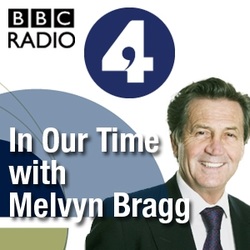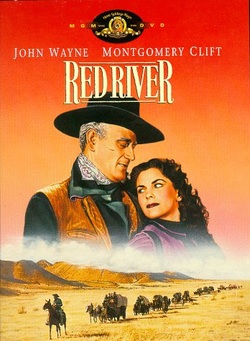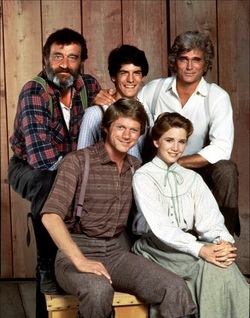
- Edward Baptist's, "The half has never been told" AND classroom applications HERE.
- Elliot West's, "Contested Plains"
 Just two quick links to book reviews:
0 Comments
 Some excellent podcasts from the "In Our Time" team. Custer's Last Stand Melvyn Bragg and his guests discuss the Battle of the Little Bighorn, also known as Custer's Last Stand. The American West Melvyn Bragg explores the myths and harsh reality of the 19th century American pioneers. With guests Frank McLynn, Christopher Frayling and Jenni Calder. Download 13MB (right click & "save target as / link as") Smoke Signals is something of a ground breaking film in the category of Westerns, in that it has been written, directed, produced by and starred in by American Indians. The film itself is adaptation of a short story collection by Sherman Alexie "The Lone Ranger and Tonto Fistfight in Heaven". Director Chris Eyre turns this into a fantastic, funny and intimate film which won both the Audience Award and the Filmmakers' Trophy at the Sundance Film Festival 1998. Smoke Signals tells the story of two very different young men, brought up in a small town on the "Rez". When Victor is called away urgently to Phoenix, the two young men are thrown together when Thomas offers to pay for his trip. The remainder of the film looks at how the characters deal with themselves, each other and their shared histories as both struggle to come to terms with their relationship with Victor's drunken father. The road movie theme is really something of an aside. What makes this a brilliant and darkly funny movie, is that it offers an honest insight into the lives of Indians on the Reservations in the late 1990s, without resorting to the kind of exploitation so common in white-directed films of the period. Indeed, Dances with Wolves is lampooned in a conversation where Victor tires to teach Thomas how to be a real Indian. As film critic Roger Ebert notes in his own analysis of the film "There's a particular satisfaction in listening to people talk about what they know well and care about. The subject isn't as important as the feeling. Listen to them discuss the ins and outs of an Indian specialty known as "frybread,'' and you will sense what they know about the world." At the very least, this might be something of an antidote to Johnny' Depp in the Lone Ranger. Indeed at one point in the film, a woman remarks to the odd duo "Hey, you two were just like the Lone Ranger and Tonto." "No" replies Thomas, "We are more like Tonto and Tonto." Try it - you might just love it Mr F  The Guardian has compiled a list of the 10 best Westerns of all time. It is well worth a look. Even if you can only watch one or two of these, it will help you access the idea of the myth of the West which is so central to the USA's understanding of itself. Can I highly recommend Stagecoach (no. 10) as a brilliant Western, I am not too sure about the Man from Laramie however... Highly disappointingly, George Steven's Shane (1953) has not made the list. This is by far and away the best Western I have seen. If you have not seen Shane, what are you waiting for - go get a slice of American history! The full list is HERE. Comment if you have any other good recommendations.  Richard White explains how the transcontinental railroads and the Homestead Act shaped the settlement of the West. Only short and well worth a listen HERE. "In 1931, Herbert Hoover called the idea of owning one’s own home “a sentiment deep in the heart of our race and of American life.” But the idea and the reality haven’t always been in accord. For many Americans, putting a roof over their heads has involved struggle and sacrifice – and often to make rent rather than mortgage payments. So in this episode of BackStory, the Guys explore the little house at the heart of the American Dream. If home ownership is such a central part of American identity, why have so many generations of Americans struggled to achieve it? Was there ever a “Golden Age” of home ownership, anyway?" What exactly is the West? What on earth are Comparative Wests? And why on earth should you care? Historians Brian Codding, Douglas Bird, Ethan Blue, Jon Christensen & Richard White introduce you to the newest way of thinking about the history of the American West. Read the introduction and key essays on what the West means today by following the link HERE Can I particularly recommend the introduction HERE and Darren Jorgensen's comparison of the myth of the cowboy in the US and Australia HERE.
How did the lone cowboy hero become such a potent figure in American culture? A great little feature from the Guardian, which is also an extract from "Fractured Times", Hobsbawm's last book. Here Hobsbawm follows a trail from cheap novels and B-westerns to Ronald Reagan... Finally a proper Marxist take on the West!!! Thanks to Miss Devey for this find Link: HERE Between 1887 and 1892, John C.H. Grabill sent 188 photographs to the Library of Congress for copyright protection. Grabill is known as a western photographer, documenting many aspects of frontier life — hunting, mining, western town landscapes and white settlers’ relationships with Native Americans. Most of his work is centered on Deadwood in the late 1880s and 1890s. He is most often cited for his photographs in the aftermath of the Wounded Knee Massacre on the Pine Ridge Indian Reservation. Click the image for more amazing photos of life on the Frontier.
A fantastic documentary from comedian Rich Hall looking at the decline of the Western as a genre. Be warned there is some strong language but a great watch none-the-less. Also check out Rich's other documentary on Native Americans. Rich Hall's How the West was Lost from A Ford on Vimeo. |
Teaching Resources
Archives
April 2023
Categories
All
|
||||||||
